Metaheuristics can Solve Sudoku Puzzles.
Metaheuristics can Solve Sudoku Puzzles.
Metaheuristics can Solve Sudoku Puzzles.
Create successful ePaper yourself
Turn your PDF publications into a flip-book with our unique Google optimized e-Paper software.
645723239414319678197534487136552Figure 1. An order-3 sudoku puzzle that <strong>can</strong> be easily solved through simple logic and reasoning, and which is typical of thosefound in many of the UK’s daily newspapers.Since being introduced into the UK by national newspaper The Daily Mail, the puzzle’s popularityamongst British people has also rocketed. At the time of writing, multiple instances of the puzzleappear daily in many of the UK’s most popular newspapers including The Independent, The Times, TheSun, as well as continuing in the Daily Mail. The vast majority of puzzle-instances found in thesenewspapers are order-3, although The Independent and Irish Independent for example, occasionallyinclude puzzles of order-4 (that they call ‘Super <strong>Sudoku</strong>’). With persistence, the experienced player <strong>can</strong>generally achieve completion of these larger grids and, if lucky, this <strong>can</strong> result in a prize. (Note thatsome publishers prefer to use numbers from zero through to n 2 - 1, or other characters in theirspecifications of what needs to go into the grid. However, this does not affect the puzzle in any wayand, for clarity’s sake, we will remain with our original definition.)1 Making and Solving <strong>Sudoku</strong> <strong>Puzzles</strong>As mentioned above, sudoku is an NP-complete problem (Yato and Seta, 2003). However, there are, infact, a large number of grid configurations that <strong>can</strong> satisfy the three criteria of the game (see section 3.2later, for example). In particular, we <strong>can</strong> easily a produce a valid solution when presented with a blankgrid by simply applying the following algorithm (producing what we call the ‘Root Solution’).ROOT-SOLUTION (n)1. x ← 02. for i ← 1 to n do3. for j ← 1 to n do4. for k ← 1 to n 2 do5. grid [n(i - 1) + j][k] ← x (mod n 2 ) + 16. x ← x + 17. x ← x + n8. x ← x + 1To make the puzzle interesting and challenging, it is therefore typical for a number of the cells in thegrid to be pre-filled by the puzzle master. The player’s aim is to then complete the grid using the filledsquares as guidance.As an example of how a player might do this, consider the puzzle-instance given in figure 1. Here,we <strong>can</strong> deduce that the cell in the 7 th row and 6 th column (shaded) must be a 6, because all numbers 1 to5 and 7 to 9 appear either in the same column, the same row, or the same square as this cell. If theproblem-instance is designed well (as indeed this one is), the filling-in of this cell will present furtherclues, allowing the user to eventually complete the puzzle.As <strong>can</strong> be imagined, the issue of designing good problem instances is particularly important if theyare intended for human players. In general, puzzles should be logic-solvable – that is, they shouldadmit exactly one solution, which is achievable through use of forward chaining logic only. Indeed,puzzles that force the player to make random choices (particularly when the grid is still quite empty)will quickly become tedious as he or she will have to go through the lengthy process of backtrackingand re-guessing if previous guesses turn out to be wrong. On the other hand, puzzles that are too easywill also quickly become irksome.Currently, order-3 and order-4 puzzles are made for UK newspaper The Independent by MarkHuckvale who uses an automated puzzle generator. According to Huckvale, a ‘good’ sudoku puzzle is
one that <strong>can</strong> be solved ‘without guessing, in a logical sequence of steps from the initial configuration toa unique final solution’ (Huckvale, 2005). The Daily Mail’s puzzles, on the other hand, are created byPeter Stirling who claims to do a lot of the puzzle generation by hand, although these are then checkedfor validity by a computer program (Pendlebury, 2005).It may be concluded, therefore, that only certain sudoku problem instances actually make goodpuzzles. Consequently, puzzle creators need to take great care to ensure that their instances areenjoyable and satisfying to the player.As well as solving sudoku puzzles by hand, there are also a number of specialised sudokualgorithms available on the web (e.g. at www.gwerdy.com and www.s<strong>can</strong>raid.com). Such algorithmstypically mimic the logical processes that a human might follow, and standard logical rules, such as theso-called X-wing, and Swordfish rules (Armstrong, 2005), are also commonplace. Additionally, someof the more sophisticated algorithms, such as the ‘<strong>Sudoku</strong> <strong>Solve</strong>r by Logic’ for order-3 puzzles(available at www.sudokusolver.co.uk) also incorporate simple backtracking schemes that <strong>can</strong> be usedto undo guesses that turn out to be wrong (if, indeed, guesses are needed at all). Such algorithms,unsurprisingly, are often able to find solutions to the logic-solvable order-3 puzzles found in sudokupublications very quickly.Lately, there have also been some sudoku-based papers published in the computer scienceliterature: first by Simonis (2005), who formulates sudoku as a constraint satisfaction problem; and,more recently, by Lynce and Ouaknine (2006) who demonstrate how individual sudoku puzzles may beconverted into conjunctive normal form, which <strong>can</strong> then be solved using propositional satisfiabilitytechniques. In both of these studies, solutions to a large number of order-3, logic-solvable puzzles arequickly obtained by the authors’ proposed algorithms, with no search being required. Higher orderpuzzles, however, are not considered in either case.However, in all of the algorithms that we have considered so far, it is worth remembering that theyare all, to some degree, dependant on being supplied with problem instances that have been speciallyconstructed so that they definitely <strong>can</strong> be solved via the application of logical rules alone; not allproblem instances, however, will have this property. Indeed, because, as we have mentioned, sudoku isan NP-complete problem, we know that we <strong>can</strong>not hope to find a polynomial time algorithm for allpossible problem instances, unless P = NP (Garey and Johnson, 1979). This implies that there will besome instances (possibly many) that <strong>can</strong>not be solved without some sort of search also being necessary.However, the systematic branch-and-bound style searches that are sometimes used as an add-on tothee sorts of algorithms are likely to slow up the run times in practice. As a simple demonstration,consider the order-3 problem-instance given in figure 1, with all of the 3s removed. In this instance, thefirst two algorithms (mentioned above) – which do not employ any search techniques – both actuallyhalt with over thirty cells still unfilled. With regards to the more sophisticated ‘<strong>Sudoku</strong> <strong>Solve</strong>r byLogic’, however, whilst this algorithm is able to solve this new problem-instance, it <strong>can</strong> only do so bymaking a number of guesses along the way. This, however, unfortunately results in a twenty-foldincrease in its execution time.Clearly then, the purely logic-based algorithms, whilst being ideal for very small and/or logicsolvableinstances, may not actually be so suitable in other cases. Additionally, branch-and-boundsearches are also likely become much more prohibitive for higher order problem instances, due to themuch larger search spaces (and therefore potential timing implications) that will occur as a result. It isin these cases, therefore, that we might see a case for some sort of stochastic search being employedinstead.The remainder of the paper is now set out as follows: in section 2, we describe a new method foraddressing sudoku problem instances that, instead of relying on logic-based rules, approaches thisproblem as one of optimisation. This is achieved via a simple representation, neighbourhood operator,and evaluation function, which we then use in conjunction with the standard simulated annealingmetaheuristic (Kirkpatrick, Gelatt, and Vecchi, 1983). In section 3, we then conduct an analysis of thisalgorithm and also introduce a technique for generating problem instances. Finally, section 4 concludesthe paper and provides a discussion on some future avenues of research.2 A New Approach for <strong>Sudoku</strong>For the remainder of this paper, the terminology that will be used is as follows: as before, a squarerefers to each n × n area of cells in the grid (denoted by the bold lines in figure 1). A square that is inrow r and column c of squares will be denoted square r, c . Secondly, the value contained in a cell in theith row of cells and the jth column of cells is denoted as cell i, j . If cell i, j has been filled with a specificvalue in the problem-instance, then it is described as fixed (in bold in figures 1 and 2), otherwise it isnon-fixed. Finally, a complete grid that meets all three of the puzzle’s criteria is referred to as optimal.
2.1 Representation and Neighbourhood OperatorHere, a direct representation is used. In order to form an initial <strong>can</strong>didate solution, we fill the grid byassigning each non-fixed cell in the grid a value. This is done randomly, but in such a way so that whenthe grid is full, every square contains the values 1 to n 2 exactly once.During the run, the neighbourhood operator repeatedly chooses two different non-fixed cells in thesame square and swaps them. In order to stop a sampling bias towards squares with less non-fixedvalues, this is done in the following way:1. Choose randomly i and j, such that (a) 1 ≤ i, j ≤ n 2 , and (b) cell i, j is non-fixed.2. Choose randomly k and l, such that (a) cell k, l is in the same square as cell i, j , (b) cell k, l is non-fixed,and (c) cell k, l ≠ cell i, j .3. Swap cell i, j with cell k, l .Note that this method of producing an initial <strong>can</strong>didate solution, together with the definedneighbourhood operator, ensures that the third criterion of the puzzle is always met. The resultantsearch space size is therefore:(1)nn∏∏r= 1 c=1f(,)!r c(Where f (r, c) is a function that indicates how many cells in square r, c are non-fixed).2.2 Evaluation of Candidate SolutionsBecause our representation and neighbourhood operator ensures that the third criterion of sudoku isalways met, an appropriate cost function is obviously one that inspects for violations of the remainingtwo criteria. Our cost function looks at each row individually and calculates the number of values, 1through to n 2 that are not present. The same is then done for each column, and the cost is simply thetotal of these values. (An example is provided in figure 2). Obviously, an optimal solution will have acost of zero.In this approach, we also use the process of delta-evaluation (Ross, Corne, and Fang, 1994) - notethat a single application of the above neighbourhood operator means that at most two rows of cells andtwo columns of cells are affected by a swap. Thus, after a single move in the neighbourhood, ratherthan re-evaluate the whole <strong>can</strong>didate solution, only the parts that have been altered are recalculated.Such a scheme offers a considerable speed-up to the algorithm, particularly when considering problemsof a higher order.RowScores1684572832573297414931689651366747255488131967295928346344188979817362352759251462111214331674572832893695414531829769362417585486731927125986343249158678917364256758243190000000001 2222221234Column ScoresCost0 000000000Figure 2. An example of how an initial <strong>can</strong>didate solution might be constructed using the problem-instance in figure 1, togetherwith the resultant cost (left). Also shown is an optimal solution to this problem-instance (right).
3 Experimental Analysis3.1 Solving Published <strong>Puzzles</strong>Our first set of tests involved trying out this algorithm on a large number of order-3 sudoku puzzles (ofvarious degrees of supposed ‘difficulty’) found in the UK’s national newspapers, and also every supersudoku instance (order-4) that appeared in The Independent during June 2005.Using a cooling rate a = 0.99 and running all experiments on a PC under Linux (2.66Ghz processorand 1GB of RAM), we found that all order-3 puzzles were quickly solved by this algorithm, regardlessof what difficulty rating the newspaper had given it. Typically, this was done in around half a secondwith no reheat being required. It is worth mentioning that although these puzzles might seem small, thesearch spaces are actually still fairly large (e.g. using our representation, the order-3 puzzle in figure 1will have approximately 4.4937×10 21 possible configurations), and so we believe that these results arepleasing, especially considering that the instances, in general, are deliberately constructed to admit onlyone optimal solution (Huckvale, 2005).For the order-4 puzzles, our algorithm also found solutions in every case. However, this generallytook a little longer to achieve (between 5 and 15 seconds), as sometimes one or two reheats wererequired. An example run with one of these order-4 instances <strong>can</strong> be viewed in figure 3.160run progress140120100cost80604020ReheatoccurshereSolutionfound here00 1000 2000 3000 4000 5000 6000 7000 8000 9000iterations (x1000)Figure 3. A typical run of the SA algorithm using an order-4 instance taken from The Independent on Saturday, June 18 th 2005.This run required one reheat and took approximately 8 seconds to find a solution.It must be noted straightaway that better run times for the order-3 puzzles (and, where appropriate, theorder-4 puzzles) are often displayed by the logic based algorithms mentioned in section 1. However,given the fact that these particular puzzles are specifically designed so that they are solvable by thevery methods employed by these algorithms, this is hardly surprising. This SA algorithm, on the otherhand, was able to find solutions to these instances without having to make any assumptions on theinitial configurations.3.2 Creating Solvable Problem instancesHaving seen that this SA algorithm is able to consistently solve published sudoku puzzles, and alsonoted that, in order to be successful, it does not necessarily require a sudoku problem-instance to belogic-solvable (i.e. specially constructed to be for solving via forward chaining logic alone), thequestion that now presents itself is: What actually does make a problem-instance difficult to solve withthis particular algorithm?In an attempt to empirically answer this question, we decided to produce our own instancegenerator. This, we achieved, by implementing a simple algorithm whereby complete, optimal grids arefirst obtained, and then some of the cells are removed from each one, according to some criteria (seebelow).First, in order to produce large numbers of optimal grids, we make use of the fact that, given oneoptimal solution, we <strong>can</strong> alter it by:• permuting columns of squares (n! possible permutations);
• permuting rows of squares (n! possible permutations);• permuting columns of cells within a single column of squares (n! n possible permutations); and• permuting rows of cells within a single row of squares (n! n possible permutations),and its optimality will still hold. Thus, given one optimal sudoku solution, there are in fact:(5)n2( n 1)! + − 1other optimal solutions obtainable from it.(Note that we are also able to take any optimal solution and switch the numbers (i.e. change all the1s to, say, 4s, then change all the 4s to, say, 2s, and so on), thus providing a further (n! - 1) possiblegrids obtainable from any one. However, whether this actually changes the puzzle in any meaningfulsense, or just simply makes it look different to the human eye, is open to debate. For our purposes wedecided not to include this additional procedure in our instance generator.)Moving our attention towards the issue of removing cells from one of these optimal grids, we notethat if the problem-instance were intended to be a good puzzle for human players, then we would needto ensure that the logic-solvable property were always held. In practice, this <strong>can</strong> easily be achieved viaan iterative scheme whereby each cell in the grid is considered in turn (possibly in a random order) andis then made blank if and only if its value <strong>can</strong> also be deduced (in some way) by the remaining filledcells in the grid. (Some useful discussion on this <strong>can</strong> also be found in the work of Simonis (2005).However, we note that the utilisation of a scheme such as this would actually impose severelimitations on what problem instances could be achieved; not least because in practice we are only ableto remove a certain proportion of cells before the logic-solvable property is lost. (With order-3 puzzles,for example, a consultation of published sudoku puzzles, as well as our own experiences, suggests thisto be approximately 70%)Thus, in an effort to look at the problem in more general terms (and to also try and answer thequestion posed at the beginning of this subsection), we therefore chose to use a more unrestrictedmethod of cell removal. Our scheme therefore operates as follows: given an optimal solution, we definea parameter p (where 0 ≤ p ≤ 1). Each cell in the grid is now considered in turn, and is removed with aprobability of exactly 1 - p. Obviously, this means that low values for p will tend to give fairlyunconstrained problem instances (i.e. grids with a low proportion of fixed cells), whilst larger valuesfor p will usually give more highly constrained problem instances (i.e. grids with a larger proportionsof fixed cells).Note that it is quite possible, particularly for lower values of p, that this method of cell removalcould produce problem instances that have more than one optimal solution. Note also that this methodof cell removal, by paying no heed to the logic-solvable property, is more than likely to beinappropriate if the problem instances are intended to make good puzzles for humans to solve by hand.3.3 Locating Phase-transitionsUsing our instance generator, we performed a large number of experiments: for values of p from 0through to 1.0 (incrementing in steps of 0.05), we first produced twenty different problem instances.With each instance, we then performed twenty trials using our SA algorithm. This we did for instancesof order-3 (81 cells), order-4 (256 cells), and order-5 (625 cells), using time limits of 5, 30 and 350seconds respectively.We noted in section 3.2 that our instance generator first needs to be seeded with a full and optimalsolution (which <strong>can</strong> then be shuffled using the four listed operators). We obtained these grids fromthree sources: firstly, by taking some solution grids from The Independent; secondly, by executing ourSA algorithm, using a blank grid as the problem-instance; and third, by using the puzzle’s root solution(generated using the algorithm given in section 1). Note, however, that because, to our knowledge,there are no current sudoku publications that make use of order-5 puzzles, in this case we only used thelatter two methods for producing optimal grids.Also, in our experiments, similarly to Eiben, van der Hauw, and van Hemert (1998) and Ross,Corne, and Terashima-Marin (1996), we choose to monitor algorithmic performance using twomeasurements: success rate and solution time. The success rate indicates the percentage of runs wherea solution was found within the specified time limits (note that the maximum rate achievable is always100%), and the solution time indicates the average amount of time that it took to find a solution. If thesuccess rate was less than 100%, then those runs where optimality was not found within the time limitwere not considered in the latter’s calculation.
Figures 4, 5, and 6 show the results of the experiments where we used our SA algorithm to producethe seed for the instance generator. Note, however, that equivalent results (not shown here) were alsoachieved using the other two methods.1.41001.280solution time (seconds)10.80.66040success rate (%)0.4200.20solution timesuccess rate0 0.2 0.4 0.6 0.8 1proportion of fixed cells (p)0301002580solution time (seconds)201510Phasetransitionregion6040success rate (%)5200solution timesuccess rate0 0.2 0.4 0.6 0.8 1proportion of fixed cells (p)0350Phasetransitionregion10030025080solution time (seconds)2001506040success rate (%)10050200solution timesuccess rate0 0.2 0.4 0.6 0.8 1proportion of fixed cells (p)0Figures 4, 5, and 6. The algorithm’s performance with order-3, order-4 and order-5 problem instances (top, middle, and bottomrespectively) for varying values of p, using a cooling rate of a = 0.99.Drawing our attention to figure 4 first (where n = 3), two things <strong>can</strong> be noticed. Firstly, we see thatwhen the proportion of fixed cells is low (i.e. a low value for p) it generally takes longer to find anoptimal solution. This is intuitive as, according to equation (1), emptier grids present a larger searchspace for the algorithm to navigate. Additionally, we note that in our algorithm the length of theMarkov chains is also determined by the number of fixed cells in the grid (equation (4)), which also
With regards to improving our algorithm, it is worth noting that there are a number of ways that thiscould be achieved: we could, for example, try to employ a more sophisticated cooling schedule such asthose presented by Abramson, Krishnamoorthy, and Dang (1996) for the school timetabling problem. Itis also quite possible that this representation, neighbourhood operator, and cost function could be usedwith other metaheuristics that are similar to SA such as tabu search (Glover and Laguna, 2002) oriterated local-search (Lourenco, Martin, and Stützle, 2002).Finally, although we have demonstrated in this paper that this sort of stochastic search approach isable to solve a large variety of different instances unaided, perhaps the most salient point arising fromthis research on the whole is the obvious potential for combining both these techniques and logicalbasedapproaches (such as those reviewed in section 1). Indeed, although we have often contrastedthese two basic methodologies in this study, it is worth noting that the relationship between these twoapproaches may well in fact be symbiotic; that is, they may well be able to profit from one another’sstrengths: a stochastic search algorithm could help a logic-based algorithm to solve a wider range ofproblem instances, and logic-based algorithms have the potential drastically reduce/prune the searchspace in order to decrease the work of a stochastic search algorithm. Thus, a hybrid algorithm forsudoku (and other related problems) that, for example, takes a problem instance and follows themethodology of (a) filling as many cells as possible via logical rules (and thus hopefully moving itaway from the phase transition region), and then (b) only switching to a stochastic search techniquewhen guesses are finally required (if at all); has the potential to provide a much more powerfulalgorithm than either of these two techniques individually. It is also conceivable that other possiblecombinations might also show even further promise, although all of this is obviously subject to futureresearch.AcknowledgmentsThe author acknowledges the invaluable insights provided by Francis Edward Lewis, and also the helpof the anonymous referees who gave comments on earlier versions of this work.ReferencesAbramson, D., H. Krishnamoorthy, and H. Dang. (1996). ‘Simulated Annealing Cooling Schedules forthe School Timetabling Problem.’ Asia-Pacific Journal of Operational Research 16, 1 – 22.Armstrong, S. (2005). X-wing and Swordfish. Online Resource, Accessed July 2005,http://www.simes.clara.co.uk/programs/sudokutechnique6.htmCheeseman, P., B. Kanefsky and W. Taylor. (1991). ‘Where the Really Hard Problems Are’ InProceedings of IJCAI-91, 331 – 337.Colbourn, C. J., M. J. Colbourn, and D. R. Stinson. (1984). ‘The Computational Complexity ofRecognising Critical Sets.’ Graph Theory, Springer LNM 1073, 248 – 253.Eiben, A. E., J. van der Hauw, and J. van Hemert. (1998). ‘Graph Coloring with Adaptive EvolutionaryAlgorithms’ Journal of Heuristics 4, 1, 25 – 46.Garey, M. R. and D. S. Johnson. (1979). Computers and Intractability. W. H. Freeman, San Francisco.Glover, F. and M. Laguna. (2002). ‘Tabu search.’ In P. M. Pardalos and M. G. C. Resende (eds.)Handbook of Applied Optimization, Oxford University Press, 194 – 208.Huckvale, M. (2005). Mark Huckvale – <strong>Sudoku</strong> <strong>Puzzles</strong>. Online Resource accessed July 2005.http://www.phon.ucl.ac.uk/home/mark/sudoku/Kirkpatrick, S., C. Gelatt, and M. Vecchi. (1983). ‘Optimization by Simulated Annealing.’ Science4598, 671- 680.Lourenco, H. R., O. Martin, and T. Stützle. (2002). ‘Iterated Local Search.’ In F. Glover and G.Kochenberger, (eds.) Handbook of <strong>Metaheuristics</strong>. Norwel, MA: Kluwer Academic Publishers. 321 –353
Lynce, I. and Ouaknine. (2006). ‘<strong>Sudoku</strong> as a SAT problem’ In proceedings of the 9 th Symposium onArtificial Intelligence and Mathematics, 2006.Pendlebury, P. (2005). ‘Can you <strong>Sudoku</strong>’. Article appearing in The Mail on Sunday, London, 8 th May2005. An online version is also available at the following address (accessed July 2005)http://www.mailonsunday.co.uk/pages/live/articles/news/news.html?in_article_id=348348&in_page_id=1770&in_a_source=Ross, P, D. Corne, and H-L. Fang. (1994). ‘Improving Evolutionary Timetabling with Delta Evaluationand Directed Mutation.’ In Y. Davidor, H. Schwefel, M. Reinhard (eds.) Parallel Problem SolvingFrom Nature III (PPSN) Springer-Verlag LNCS 866, 556 – 565.Ross, P., D. Corne, and H. Terashima-Marin. (1996). ‘The Phase-Transition Niche for EvolutionaryAlgorithms in Timetabling.’ In Edmund Burke and Peter Ross (eds.) The Practice and Theory ofAutomated Timetabling (PATAT), Springer-Verlag LNCS 1153, 309 – 325.Simonis, H. (2005). ‘<strong>Sudoku</strong> as a Constraint Problem’. In CP Workshop on Modelling andReformulating Constraint Satisfaction Problems, pages 13-27, Spain, October 2005.Smith, B. (1994) ‘Phase Transitions and the Mushy Region in Constraint Satisfaction Problems’. In A.Cohn (ed) Proceedings of the 11th European Conference on Artificial Intelligence, John Wiley andSons Ltd, 100 – 104.Turner, J. S. (1988). ‘Almost all k-Colorable Graphs are Easy to Color.’ Journal of Algorithms, 9, 63 –82.van Laarhoven, P, E. Aarts. (1987). Simulated Annealing: Theory and Applications. D. ReidelPublishing Company, The Netherlands.Yato, T. and T. Seta. (2003). ‘Complexity and Completeness of Finding Another Solution and ItsApplication to <strong>Puzzles</strong>’. IEICE Trans. Fundamentals, Vol. E86-A, No. 5, pp. 1052-1060.


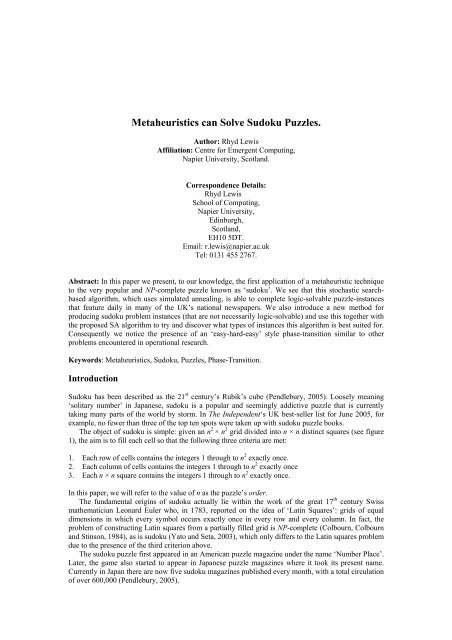
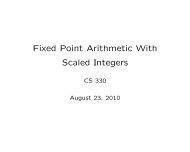
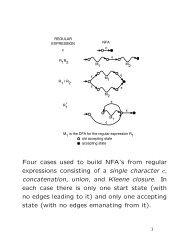
![[PDF] Fun with Syntax - ezekiel](https://img.yumpu.com/48148851/1/190x245/pdf-fun-with-syntax-ezekiel.jpg?quality=85)
![[PDF] Syntax and Semantics](https://img.yumpu.com/40036635/1/190x245/pdf-syntax-and-semantics.jpg?quality=85)

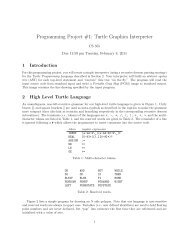
![[PDF] Turtle Graphics - ezekiel](https://img.yumpu.com/30626918/1/190x245/pdf-turtle-graphics-ezekiel.jpg?quality=85)
![[PDF] Intro to OpenGL and GLUT programming](https://img.yumpu.com/30459270/1/190x146/pdf-intro-to-opengl-and-glut-programming.jpg?quality=85)
![[PDF] CFL Pumping Lemma](https://img.yumpu.com/29995553/1/190x245/pdf-cfl-pumping-lemma.jpg?quality=85)

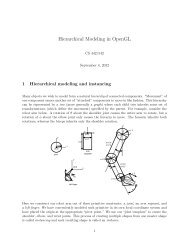
![[PDF] Encapsulation + Inheritance + Polymorphism](https://img.yumpu.com/24621947/1/190x245/pdf-encapsulation-inheritance-polymorphism.jpg?quality=85)